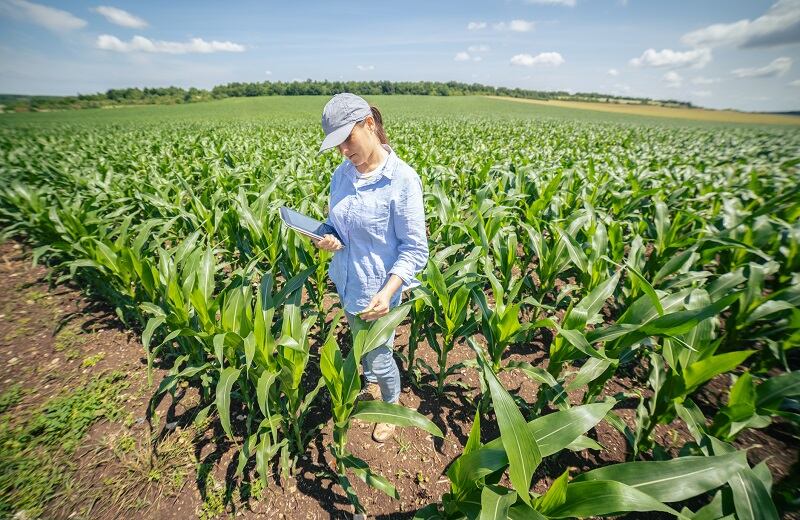“More people will sit down to a full plate of dinner, thanks to all types of agriculture and all of the advances that have happened,” said Christy Wright, director of global food systems for agriculture chemical company Corteva. “But the challenges are expanding, and they're increasing. Population is growing, natural resources are threatened, the climate is changing, and we have new challenges.”
Addressing new, old agriculture challenges
While farmers deal "new pest complexes due to climate change" and other environmental impacts, their mission has become more all-encompassing, Wright explained.
“The purpose and the mission of agriculture has expanded. It is not just food security, not only feed the world, but how can we feed and fuel the world better, and in a way with less environmental impact,” Wright said. “The challenge is expanding, but it's very complex, but the good news is we see solutions, and we see a path forward.”
For example, the alternative meat and protein market, which provides a more efficient and sustainable way of growing food, claimed Andre Menezes, co-founder and CEO of plant-based CPG company Tindle.
The food industry needs to root out the most inefficient parts of its system to feed the growing population, Menezes said. Part of that inefficiency is the production and consumption of animal-based meats and foods and shifting to a more plant-based diet, which has been linked to sustainability benefits, he claimed. Not only does raising livestock require a host of resources (land, feed, antibiotics, etc.), but the food industry has developed more sustainable means for growing food, he added.
"It's time for us to look at a more efficient technology to take out the most inefficient portion, which happens to be animals in this case, out of the equation," said Menezes. "If we're being so inefficient with consumption of grain because we're feeding animals, we are using more nitrogen and more phosphorus to grow those grains, and that's a compiling effect and compounding effect."
[Editor's note: Learn more about where Tindle's Andre Menezes sees the plant-based category going at FoodNavigator-USA's upcoming webinar May 17. Find all the details are register for Plant-based Dairy: From oatmilk to chickpea ice cream.]
Moving away from phosphorous-based fertilizers
Another inefficiency is the reliance on phosphorus/nitrogen-based fertilizers, with its current usage being "a red-light warning on our dashboard for the planet," said Phil Kerr, CTO of Houdek Manufacturing, which makes plant-based protein.
Today's agriculture is "heavily dependent on nitrogen fertilization," which is applied to crops and ultimately ends up in our waterways, Kerr said. Given a large percentage of farming goes to growing animal feed, resources are being wasted and doing further damage to the planet by not converting to a more sustainable fertilizer, he added.
"It's a waste of money. It's a waste of resources, [and] it puts the planet squarely at risk. So, it starts there, but it manifests itself all the way through the supply chain, so what's inefficient in primary ag production is also inefficient in livestock production."
But can plant-based, animal-based live together?
Beyond adapting regenerative agricultures, the entire plant-based industry needs to come together also in terms of the messaging and marketing of plant-based products, said Menezes. And the plant-based industry might be able to take some lessons from its counterparts.
"If you look at the dairy industry, for example, we're all convinced that we need to drink cow's milk ... in order to be healthy over decades of work being done by the industry, frankly very well done by the dairy industry that convinced educated society,” said Menezes. “So, what else can we do collectively as food system players to drive that education, consumption, and transformation we want to see."
While alt protein brands have focused on a single hero protein and developing a product around it — mycelium, konjac, etc. — products that blend plant- and animal-based proteins shouldn't be discounted, Kerr said. Additionally, these hybrid products can still go towards reducing the overall consumption of animal meats, while not making consumers feel like they have to give up meat entirely.
“What I see a lot of times in plant-based foods is they are going to live and die on having a single source of protein; it's chickpeas or peas or soy or whatever. And yet time and time again, the most sophisticated food in sensory science will show that they're actually very nice, complementary benefits when you look at protein systems.”


